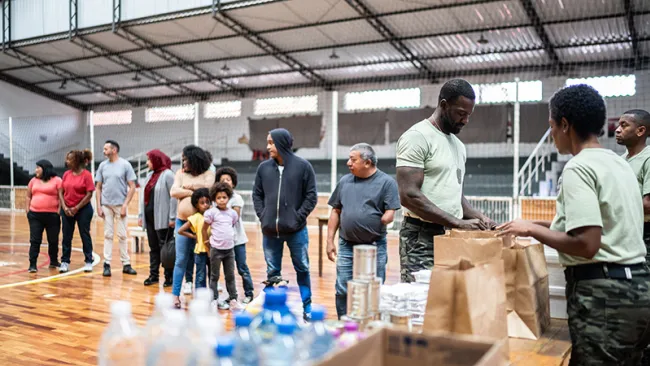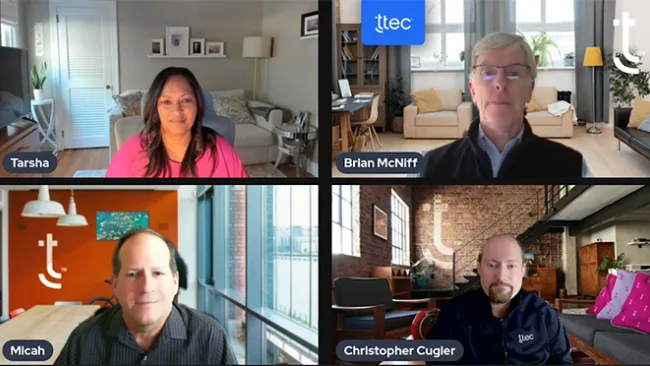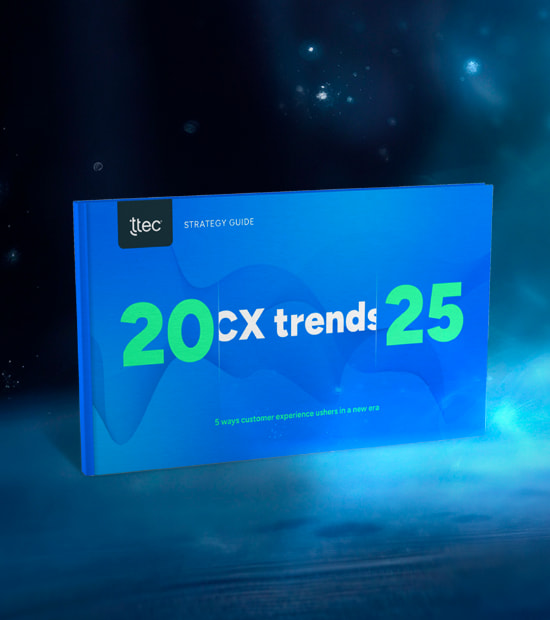Among the many impacts the COVID-19 pandemic has had on government, one of the biggest has been the onslaught of calls, inquiries and requests for information swarming government agencies - unlike anything the public sector has ever seen before.
At a time when more consumers than ever are demanding quick, reliable information from them, many government agencies struggle to find personnel or resources dedicated to ensuring a good citizen experience, but that’s likely to change.
Government puts a new emphasis on CX
The Office of Management and Budget (OMB), which oversees the performance of federal agencies and administers the federal budget, is calling on all federal agencies to improve its customer experience (CX) initiatives.
In August 2020, OMB updated its guidance for all agencies, expanding its definitions for the terms “customer” and “service delivery” as they pertain to government. “Customers” now include individuals, businesses and organizations that interact with a government agency or program either directly, via a federal contractor, or through a federally funded program. Customers also now include public servants and federal employees.
But the biggest change in OMB’s guidance focuses on how customer experience ought to be measured. OMB will require all agencies to develop an overall trust score based on survey data, and the new guidance emphasizes customer trust as a priority.
The guidelines also specify several CX goals OMB wants agencies to reach by 2030. They include:
- Customers will rate satisfaction with federal services comparable to private sector averages
- Federal programs will identify the most important drivers of experience to the customer for particular types of services and transactions
- Significantly increasing public trust in the federal government
Pioneers in government CX efforts
The private sector has long been focused on customer experience to improve outcomes, but the concept is far less common in the federal government. Few government agencies have staff devoted to cultivating positive customer experiences. In December 2020, Forrester called on President Joseph Biden’s administration and Congress to create the position of federal chief customer officer, but no actions have yet been taken.
There are, however, a few federal bright spots that are focused on citizen experiences.
The Department of Veterans Affairs (VA) has a dedicated Veterans Experience Office with a had a chief veterans experience officer since 2017. The Veterans Experience Office’s role is to listen to veterans, their families, caregivers and survivors to enhance their access to care, benefits and services. The chief veterans experience officer is tasked with advising the VA secretary and other senior leaders about the needs of veterans and their families amid the VA’s ongoing modernization efforts.
“It is critical that we create a seamless veteran experience across the entire organization,” VA Secretary David Shulkin said in announcing the creation of the chief veterans experience officer post in 2017. “VA must proactively engage veterans and their families to ensure their voices are heard.”
Dr. Lynda Davis was the VA’s first CXO, succeeded in February by John Boerstler as part of the new Biden administration.
To keep current and stay ahead of experience trends, the office is currently preparing the launch of the VA’s Customer Experience Institute (VACXi), which will “infuse data, tech, tools, and engagement to improve CX,” according to its website.
The U.S. General Services Administration (GSA) also has a chief customer officer. The position, currently held by Ed Walters, focuses solely on improving customer experience and promoting a customer-first approach within the agency.
According to his LinkedIn biography, Walters “has broad authority and responsibility for improving the end-to-end experience of GSA customers by aligning operations to customer needs. He is tasked with embedding customer-oriented thinking into GSA’s daily operations to ensure GSA delivers sound products, as well as great customer service.”
GSA has a vast mandate to manage office space, procure supplies and improve the use of technology among other federal agencies. It also operates Digital.gov, an online resource for digital transformation across the federal government, including insights on why federal agencies must improve CX. The site is run by a cross-functional team of writers, editors, strategists, technologists and designers, all of whom work at the Technology Transformation Services within the GSA.
There’s also the U.S. Digital Service (USDS), which works to deliver improved government services to the public through enhanced technology and design. The USDS is a group of technologists working across the federal government in an effort to transform critical federal services. The service deploys small, responsive groups of designers, engineers, product managers, and bureaucracy specialists to work with and empower civil servants. They bring best practices and new approaches to support government modernization efforts. Many of those approaches work to alleviate friction in the experience by streamlining points along the customer journey.
Shining a light on digital, automation, and data
Any successful CX initiatives must have a digital strategy as their cornerstone. There’s no doubt that the way to customers’ hearts in 2021, and beyond, is increasingly digital.
Just like those who deal with private-sector brands, many people interacting with the government want effortless experiences that are convenient, quick, and conducted in their channel of choice.
One key to a digital-first approach is automation. Integrating more AI and automation into redundant processes and workflows can greatly benefit public agencies. Automating simple tasks speeds up the process and frees employees up to focus on more complex issues, thereby offering better customer experiences. Agencies should identify which high-volume, simple tasks can be resolved quickly through automation and which ones require a skilled human associate.
Agencies making an earnest effort to improve CX must also continually gather data and assess analytics to see how they are faring, where there are successes and where there are challenges.
Data should be gathered at various points throughout the entire customer journey, and agencies should be nimble enough to pivot quickly when roadblocks arise. As the new OMB guidelines show, customer trust is a paramount in today’s world, and analytics can play a key role in offering experiences that breed trust.
For many government agencies, focusing on CX initiatives will represent a drastic shift. The federal government, to many, has the reputation of being a slow bureaucracy in which things have been done the same way for a very long time. But that is changing. The forward-thinking agencies that are already embracing CX techniques are proving it can be done—with the right technology, automation and staffing support with benefits to the public and agencies in the long run as a result.


















